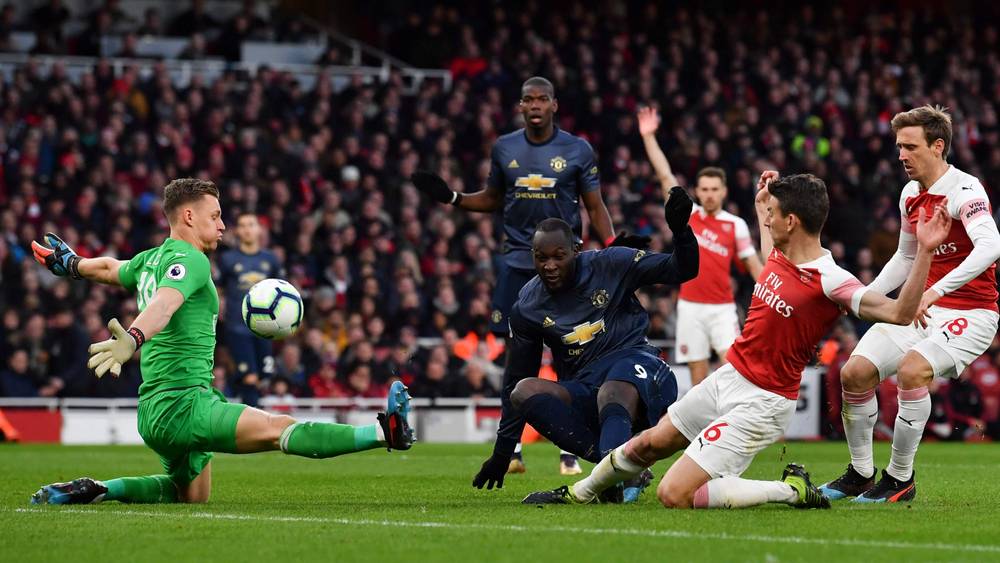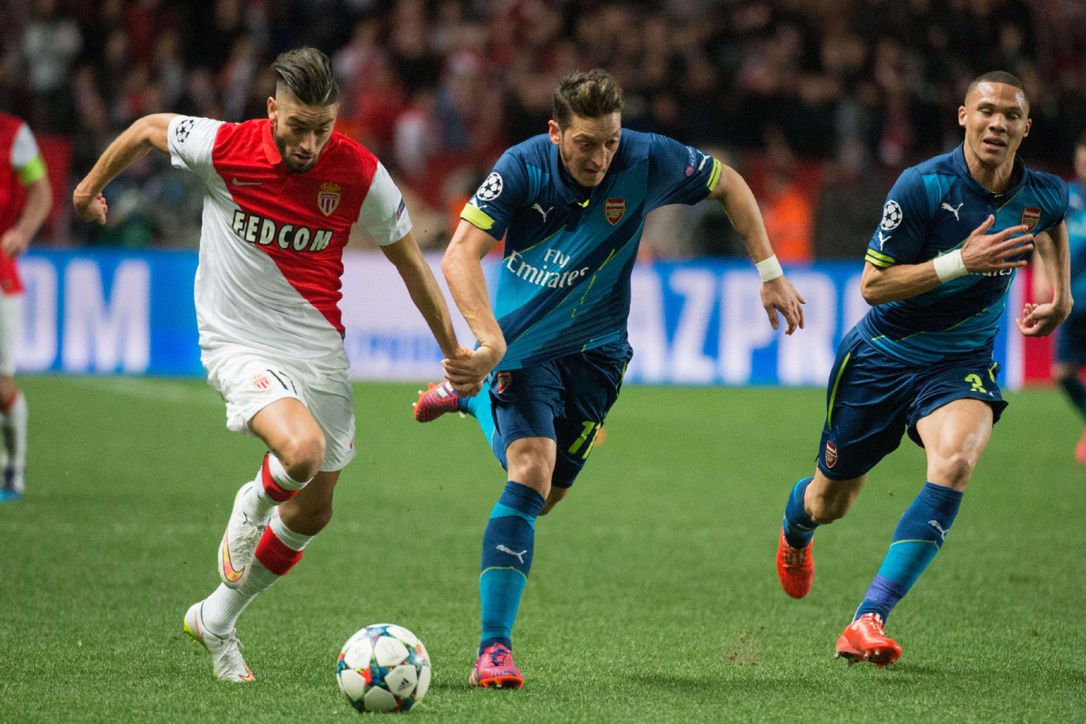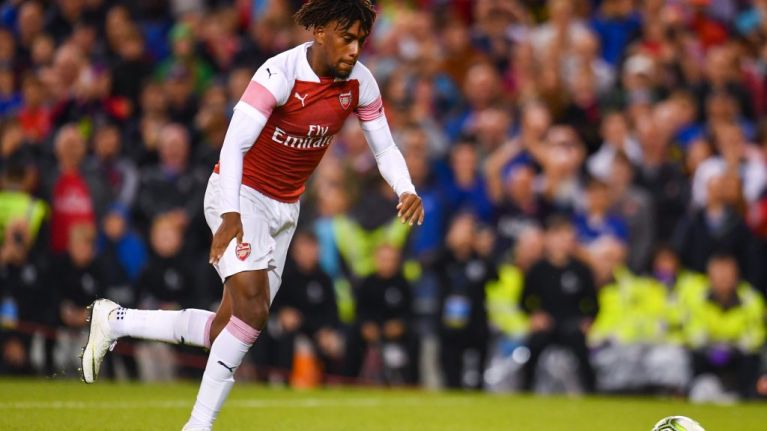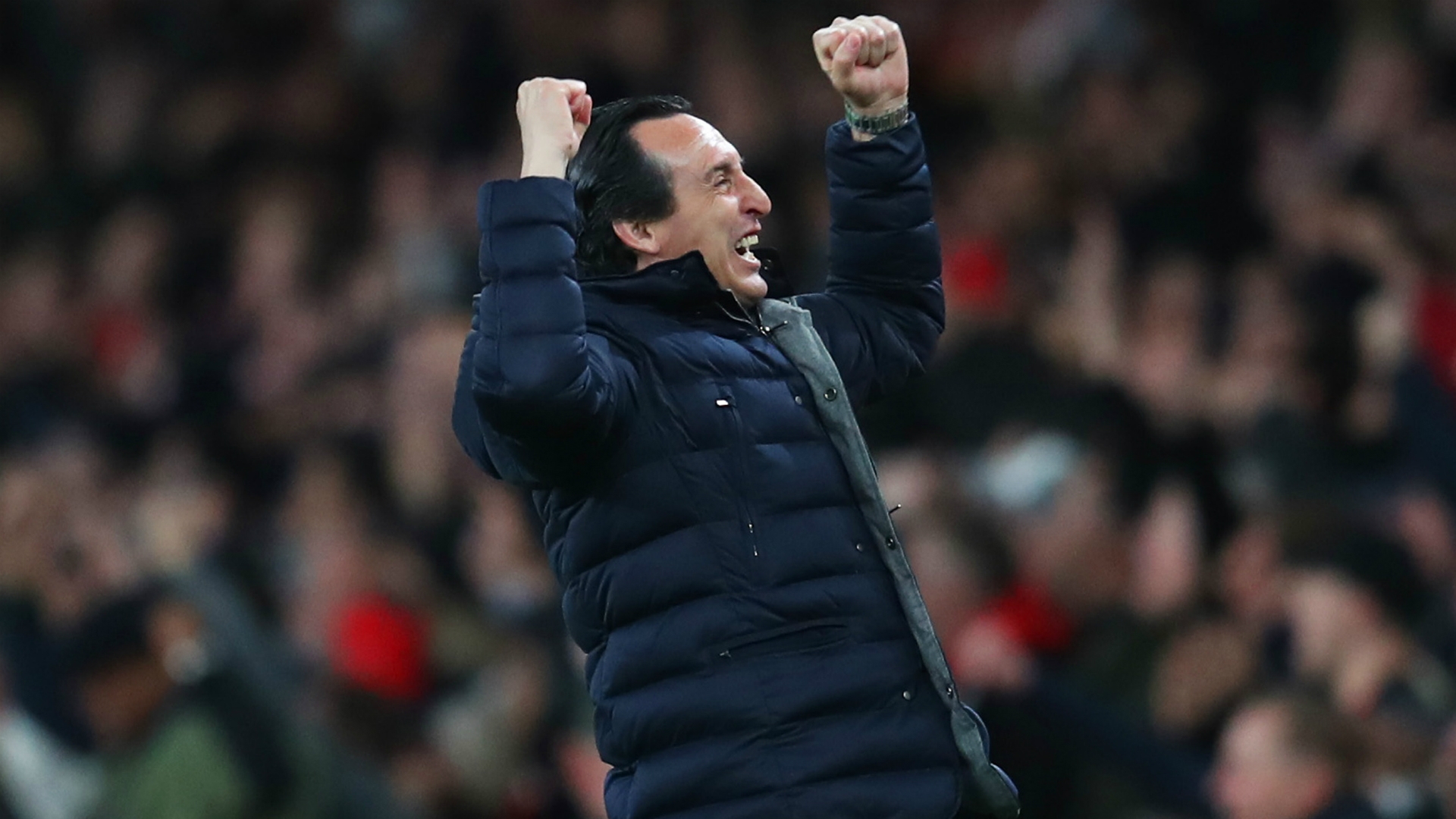Inside Unai Emery’s coaching playbook: A breakdown of Arsenal’s resurgence
After Arsenal’s 2-0 win over Newcastle, Arsenal sit third in the Premier League. It would be hard to argue that their squad is the third best in the division, and so much of the success can be attributed to Unai Emery’s coaching.
Here, we examine how Emery has improved the team this season.
On the pitch
On the ball
Emery’s Arsenal are curiously shot-shy
Only Manchester City and Liverpool better Arsenal’s 65 league goals, so at a superficial level Emery looks to have engineered a well-oiled attacking unit.
Look beneath the bonnet however, and things are more complex. Arsenal are registering considerably fewer shots per game than last season, and their Expected Goals per game number has fallen from 1.74 to 1.53. It tells us little about the quality of the attempts, but relegation certainties Fulham have had more shots than Arsenal this season as a raw total.
That suggests Arsenal have benefitted from a season of hot finishing, something that might not continue in the long-term. However, Pierre-Emerick Aubameyang 0.65 goals per Premier League 90 minutes is only slightly better than his ‘expected total’ of 0.57 per 90. Alexandre Lacazette has experienced more of an over-performance with 0.51 goals per 90 from an expected return of 0.39.
So have Arsenal and Emery got lucky or are their methods undetected by the numbers? Arsenal have certainly taken a more measured approach to shooting this season, taking shots from almost a yard closer to goal on average compared to last season (17.54 yards to 18.4).
Arsenal are also attacking through wide areas and crossing more under Emery, firing 15.57 balls into the box from the flanks compared to 14.13 last season. This passes the eye-test too, with cut-backs from Hector Bellerin and Sead Kolasinac becoming an Arsenal trademark and one of their most fruitful routes to goal.
By their nature, these low crosses are high tariff with only 32.1 percent finding an Arsenal man. However, those that do come off tend to result in a very high quality chance.
This might be why Arsenal’s shot numbers are less than impressive, even in games when they attack well and look dangerous. Kolasinac’s two first-half crosses against Manchester United are a good case study. Both flashed across the box without registering a shot, but had an Arsenal player connected it would have been a near-certain goal.
Less horseshoe passing
Wenger’s Arsenal were renowned for their lengthy spells of possession in the opposition final-third, looking to pick the lock through the kind of short combination play exemplified in Jack Wilshere’s goal of the season against Norwich City in 2013.
Emery’s Arsenal by contrast, have been far less concerned with keeping the ball at all costs. Arsenal average 514.9 passes per 90 this Premier League season having racked up 598.95 last season, while their average passes per period of possession has decreased from 5.86 to 5.03. Passes into the final third has fallen from 77.13 per 90 to 59.13. Their average pass length has also increased marginally, hinting at more directness.
This shift away from a possession-heavy style could be the natural product of changing personnel with artisans Wilshere, Santi Cazorla, Mikel Arteta and Tomas Rosicky all departing from Arsenal in the past three years.
The presence of Lucas Torreira, Henrikh Mkhitaryan and Alex Iwobi has given Arsenal a different feel, all players who come alive in transitions more than elaborate sequences of pass and move triangles (though they are more than capable these situations).

Emery appears to be keen to draw opponents out, including those in the bottom half of the table, and creating phases of broken play is one way of doing this. Against Southampton and Bournemouth at the Emirates last month, Arsenal were able to pounce on their opponents’ mistakes and cut through with swift counter-attacks.
Even their more elaborate team goals, like those against Fulham and Leicester in the first half of the season, were sweeping, direct attacks from one end to another.
Arsenal can therefore give the impression of quite a sporadic attacking force, not always camped in the final third like the Wenger teams of old, but more dangerous in the moments they do attack when defences are not set.
Playing out from the back an attacking weapon
It may induce gasps of anguish from supporters, but Arsenal’s ability to play out from the back this season has been a key component of their excellent home form.
Even the most creative attacking sides struggle to break down massed, deep-lying defences that have little to no intention of coming out of their shape. Playing out from the back is an effective way of tempting opposition forwards and midfielders to briefly vacate their stations in the hope of nicking the ball.
Once they have done so, the half-spaces open up for players like Mesut Ozil and Henrikh Mkhitaryan to get on the ball and launch attacks against opponents that are now ever-so-slightly out of shape.
 Bernd Leno’s distribution has added a new dimension to Arsenal
Bernd Leno’s distribution has added a new dimension to Arsenal
Bringing in the ball-playing Bernd Leno last summer has been key to this tactic, but it is also testament to Emery’s coaching prowess that he has got defenders like Sokratis and Laurent Koscielny looking so assured on the ball.
The premium paid for getting this tactic wrong is extremely high, so it is not a strategy that managers enter into lightly. Only those with an an obsessive amount of attention to detail like Emery and Pep Guardiola can feel confident they will be able to train their players to employ it successfully.
Drawing fouls to relieve pressure and manage the game
Arsenal are the most fouled team in the league, with central midfielders Torreira, Guendouzi and Xhaka ranking among the 15 most fouled individuals (Torreira is fourth behind only Richarlison, Wilfried Zaha and Eden Hazard).
Those prone to conspiracy might say Arsenal have been unfairly targeted, but the foul count could be seen as a positive and something they have added to their game.
New arrivals Torreira and Guendouzi are comfortable receiving the ball under pressure and taking it into contact. Even the slightly flat-footed Xhaka has followed their example, dribbling past Paul Pogba and drawing a yellow card in the recent league meeting with Man Utd.
Arsenal have sometimes wilted when pressed in central midfield in past campaigns, as some miserable trips to Anfield and White Hart Lane attest. While there is still room for improvement, Arsenal look to be keeping their heads when pressurised and making smarter decisions, aided of course by their more methodical and structured build-up play that starts with Leno.
Drawing fouls also slows the game down, and Emery’s Arsenal have proved quite canny at managing games when they get their nose in front. The closing stages of home wins against Chelsea and United were perfectly uneventful from Arsenal’s perspective. The next step in their progression is to take the sting out of away games in similar fashion.
Off the ball
Allowing teams the ball and pinching it in dangerous areas
One of the most striking elements of Arsenal’s play this season has been their willingness to sit off and allow their opponents to have the ball.
Under Wenger the fetishisation of possession was such that when Arsenal beat Manchester City away four years ago despite having only 35 per cent of the ball, the reaction at the club was as if they had just robbed Fort Knox. Winning a game when not dominating the ball? What sorcery is this?
The reality is that for most teams – even the biggest ones, Real Madrid especially come to mind – winning games when ceding possession is fairly unremarkable. Sir Alex Ferguson’s Manchester United’s teams would do it so routinely to Arsenal in fact that the sight of Park Ji-Sung and co galloping towards another counter-attacking goal became grimly routine.
The tactical magpie that he is, Emery is not wedded to a deep-lying possession-averse system, but he is happy to do it when required. In the 2-0 win against Chelsea for instance, Arsenal enjoyed just 35 per cent of possession – trusting that their defence would be well-organised to repel Maurizio Sarri’s sterile domination. They also had less of the ball in the home win against United, with Emery again backing the defence to hold firm and the front two of Alexandre Lacazette and Pierre-Emerick Aubameyang to do enough with the chances that fell their way. Overall Arsenal have averaged 58 per cent of the ball in Premier League games compared to 62 last season.
A secondary part of this less possession-hungry strategy is preying on the opposition when they have the ball to win turnovers and set up quick counters. Lacazette is particularly effective at doing this – just ask the dithering Southampton defenders who he caught out to create a goal for Mkhitaryan in February’s 2-0 win.
Improved shape
As referenced above, one of Arsenal’s most damaging habits in the later Wenger years was pushing forward and leaving themselves vulnerable to the counter attack.

Emery has worked desperately hard to avoid Arsenal being exposed on the break, and after some early teething problems, the results have been positive. Only Manchester United and Wolves have conceded fewer counter-attacking goals this season.
Part of Arsenal’s improvement in this area is down to Emery’s obsession over shape and the hours spent drilling this into his players on the training ground. Then there is his use of Aaron Ramsey, which underlines how concerned Emery is at Arsenal suffering from turnovers.
One of Emery’s first selection decisions upon arriving at Arsenal in the summer was deciding that Ramsey couldn’t play in a central midfield pair if the team was set up with a back four.
Instead when Ramsey has played it has been alongside two of Xhaka, Guendouzi and Torreira, or with the safety of three centre-backs behind him.
Great player that he is, Ramsey’s wanderings were a key reason why Arsenal would leave a vacant central midfield area for their opponents to saunter into. This season, the system has rendered Ramsey’s meanderings less costly, while at the same time allowing him to flourish further forward. Round pegs in round holes, I think that’s called.
Off the pitch
Improving individuals
Emery’s more prescriptive approach on the training pitch seems to have benefited a number of Arsenal players, particularly those still starting their careers.
Rob Holding, Alex Iwobi and Hector Bellerin all found consistency and a structure that best displayed their attributes. Holding’s distribution was vital to Emery before his season-ending knee injury, Iwobi has been more persistent and aggressive while Bellerin fits the requirements of an Emery full-back perfectly.
Danny Welbeck and Henrikh Mkhitaryan may not have improved per se, but are both the type of flexible and hard working wide-forwards Emery likes, particularly in his base-line 4-2-3-1 system. Granit Xhaka looks so much more comfortable with an orthodox midfield partner, while Lacazette has exuded authority and presence up front. He took some time to gain Emery’s trust, but Sead Kolasinac is a lock for left wing-back should Arsenal play with a back three and his defensive work has grown in diligence.

Alex Iwobi’s ball retention and dribbling is valued by Emery
If Arsenal’s conversion rates are a measure of good fortune, then Emery was desperately unlucky to lose Bellerin, Holding and Welbeck to serious injuries in his first season.
The road has been bumpier with the more experienced names. Emery’s use of Aubameyang on the left in the season’s early weeks was an awkward accommodation, but the striker has since done what he always does and score plenty.
Ozil was used sparingly, with Emery broadly hinting that he wanted greater availability for matches and training from the playmaker, but has been reintegrated and is quietly finding his best form. There might be sound financial reasons for not renewing Ramsey’s contract, but his form has rubbished suggestions he could not fit in an Emery team.
Tactical flexibility
Arsenal had strong runs of form right up until Wenger’s final season, but often their prospects seemed to rely on the presence of key individuals and partnerships to balance the team. Cazorla and Francis Couqelin’s midfield axis worked well for example, but their attributes were not replicated elsewhere in the squad and neither had another compatible partner. As soon as one was absent, the whole house of cards came down.
The autumn 2016 front three of Theo Walcott, Alexis Sanchez and Iwobi had a nice chemistry, but the next cab off the rank was Olivier Giroud – a fine player in his own right, but one who utterly altered the balance of the attack.
By contrast, Arsenal’s good run under Emery seems to be underpinned by something more permanent, above and beyond the qualities of any individual player. Arsenal are achieving consistent performances despite constant alterations of shape and combinations. Everything is changing, yet things stay the same.
In Arsenal’s home win against Tottenham, they started in a 3-4-2-1, switched to a 3-4-1-2 at half-time, before going to a back four late in the game. A 4-4-2 diamond did the trick against Chelsea, 4-2-3-1 should have produced a win against Spurs at Wembley while it was 3-4-1-2 against United. Arsenal have gone from the leopard that never changes its spots to the chameleon of the Big Six.
This rotation has another benefit: Arsenal look fit and fresh and Emery’s fondness for dividing games intro chunks means no individual has been overburdened with minutes. Apart from the impact injuries to Holding, Bellerin and Welbeck, soft tissue problems have been kept to a minimum.
Meritocracy and the end of over-indulging favourites
Xhaka, Lacazette, and Iwobi. All three have been key players under Emery, and all three have been hooked at half-time at one time or another this season.
The two are not mutually exclusive, with Emery merciless when it comes to sacrificing individuals for the good of the team. Ozil has probably been the starkest example of this, and Emery deserves great credit for how improved Ozil’s performances have been since the manager essentially said: stop missing training and matches with illness, and I’ll play you.
Part of the Arsenal squad’s receptiveness to Emery’s meritocractic approach can be traced back to the end of the Wenger era when players like Sanchez and Ozil – despite their reluctance to commit to the club – were essentially undroppable. Ramsey and Koscielny were said to be especially infuriated with the way Sancez was indulged.
In the great Wenger teams, there was a tradition of fringe or young players coming in and making a first-team place their own – Ashley Cole, Edu, Sylvain Wiltord – and that has been the case for much of this season. Iwobi, Rob Holding, and now Ainsley Maitland-Niles have all done something similar since August.

